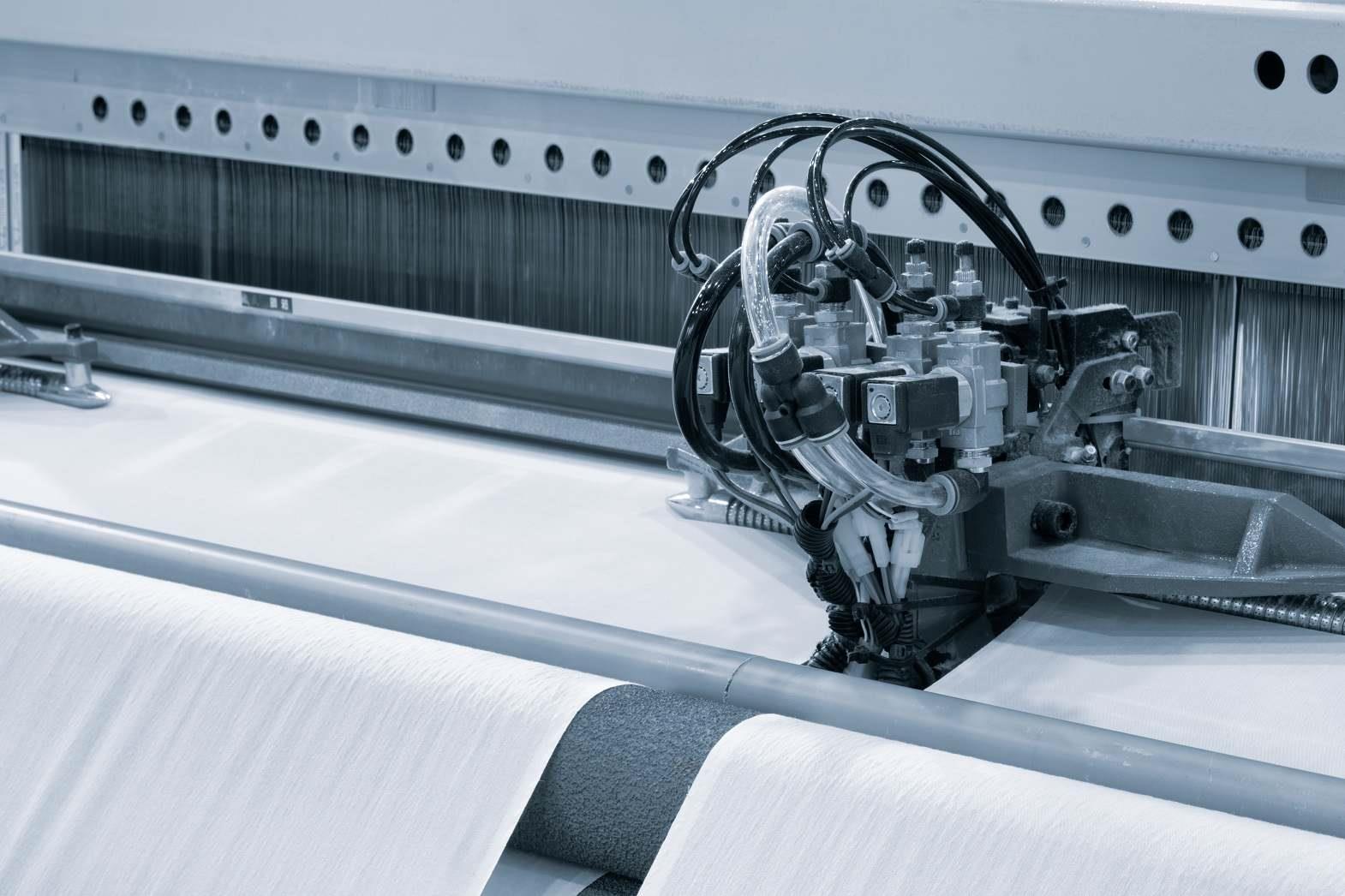Technology is improving every minute, and it has touched various sectors of industries for the better. A few years ago, the weaving and processing sector of the textile industry was considered to be lagging behind. With serious efforts from the industry itself, the government, and engineering departments, weaving technology has seen significant advancements. The journey of weaving, from plain power looms to highly automated weaving machines, has been interesting.
The technological advances that the weaving sector has witnessed include a higher level of automation. The demands on automation include maintaining a constant velocity in the same direction regardless of other changes. This velocity should be directly related to warp let-off and fabric take-up, ensuring consistency in the quality of fabric, ensuring that weft insertion complements the cycle times, providing fast position-oriented supply of weft threads corresponding to color selection, increasing machine cycle times, reducing the frequency of resetting times for changes of various sets, and making the process data and pattern data management and preparation easily reproducible.
When deciding whether to automate the weaving process, it is important to analyze the production steps. The initial step in weaving is to stretch the warp, followed by selvage formation. The three essential steps after this are shedding (raising every alternate warp yarn), inserting the weft, and battening the weft to make the fabric compact. Among all the points that can involve automation, it is noteworthy that most of them deal with materials handling or transport. Only four applications in weaving deal with automating the machine operations themselves. These include mechanical process control on the slasher, automatic pick repair of weaving functions, programmed warp breakage locator, and computerized machine control. Manual assistance is still needed for beam replacement and repairing warp breaks.
In weaving technology, the loom, which is a mechanical device used to produce woven fabric by inserting warp and weft yarn, is the principal mechanical device for weaving. Today, automatic shuttle looms and automatic shuttle-less looms are used for weaving. Automatic looms include methods of holding the yarn such as rapier and gripper systems. They offer advantages such as higher productivity compared to water jet and air jet looms that use water or pressurized air for yarn transport, especially in cases involving multiple-color weft insertion.
The textile engineering has also ensured that weaving and knitting machines lead the way in utilising computer technology in textile manufacturing for many years with their use of computer aided designs (CAD), bi-directional communication and artificial intelligence. A CAD system can be used to develop the fabric to be produced and the design can then be transmitted over the network to the production machines to produce the desired fabric. Now, the design instructions can even be sent by modem from one country to a weaving machine located anywhere else in the world. Such an implementation of electronic control has simplified operations as only the conditions such as yarn type and weave, width need to be input in order for the optimum operations to be performed.
The automation technology used in the weaving also includes sizing machine control systems. These systems provide a mechanism for management to make sure that all warps are sized identically under standard operating conditions. These monitoring and control capabilities can be integrated in the weaving mill's computer network. Implementation of electronic control such as computer control in automatic looms has simplified operations as only the conditions such as yarn type and weave, width need to be input in order for the optimum operations to be performed.
Automation has resulted in control of machines electronically. The machines are user friendly and produce fabrics at the speed of commodity fabrics. The inspection of fabrics on loom, use of optical and laser detection of warp break, reduction in downtime due to less manual work and larger involvement of machines and quick style and warp beam change are all possible today because of automated weaving process. The machine speed is much faster than it was 20 years ago (to be precise at least five to ten times faster). Gaining a speed of upto 1000 revolution per minute (rpm) is effortlessly possible now.
China, France, Belgium, Switzerland, Germany, etc. are active exporters of automatic weaving machines to several countries around the world. Though automated weaving is gaining momentum, there are a few developing countries like India which produce and export both automatic and non-automatic looms suitable for the needs and conditions of the developing countries. Some companies also invest in second hand machines, however, the decision to invest in second-hand weaving equipment is not an easy one to make as it involves complex considerations of a technical and economic nature.
The automatic weaving machines require a good standard of technical training and diligence to ensure satisfactory operation of the automatics. The machines by which automatic weft replenishment is achieved are complex. Also, it is necessary to be more careful in the care and adjustment of the picking mechanism during shuffle in machines when compared to the shuttle being removed and replaced manually. The good news is that the automatic weaving machines have been optimized and adapted to meet a wide variety of requirements.
While most of the textile processes are completely automatic, weaving is still partially automated. Research is going on full swing by knitting machine manufacturers to make exceptional use of electronics with a view of providing machines that are more automatic and versatile. Many modifications in the already made advances have been initiated. It is important that industries encourage automation and similar advancements in the weaving section of the textile, as automation would ensure that the manufacturers supply finest quality of fabric in decided time limit.
References:
1. Collections.infocollections.org
2. Textilelearner.blogspot.com








Comments